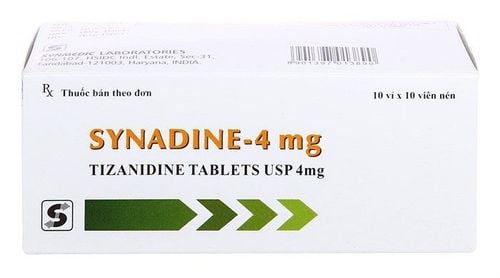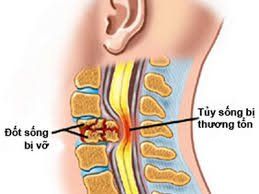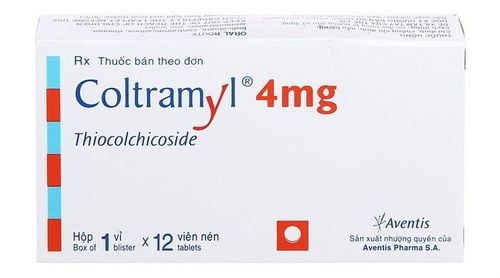This is an automatically translated article.
The article is professionally consulted by Master, Specialist Doctor I Nguyen Thi Thanh Binh - Rehabilitation Doctor - Department of General Surgery - Vinmec Da Nang International General Hospital.Rehabilitation after spinal cord injury is considered an essential part of the treatment of patients after spinal cord injury. Spinal cord rehabilitation needs to be recognized with the benefits it brings to the patient, including the prevention of complications such as ulcers and muscle cramps, strength training exercises, restoration of Basic living skills to lead an independent life, solve psychological problems.
1. Contents of spinal cord rehabilitation
Rehabilitation of patients with spinal cord injury requires close coordination between the physician, caregiver, and the patient herself. This is a long journey, including many things to do at the same time.1.1. Physical therapy exercises for patients with spinal cord injuries Breathing and coughing exercises People with spinal cord injuries with high spinal cord segments in the neck and chest area must face partial paralysis of the respiratory muscles. Therefore, the patient loses the ability to cough, causing sputum sputum, increasing the likelihood of pneumonia. Place both hands in front of the patient's chest, pressing firmly on the chest when the patient coughs. Avoid shifting the spine.
Exercise exercise During the initial period after spinal cord injury, the patient is often immobile, muscle contractions may appear, most commonly at the joints, often accompanied by stiffness. Therefore, the regional joints in the paralyzed limbs need to be moved regularly, about 10 times a day, in both sitting and lying positions.
Exercise to strengthen the muscles in the limbs and trunk The patient is in a sitting position, with both arms straight on 2 wooden boxes or hard cushions with a thickness of about 15 cm. Encourage them to lift their torso up with the strength of their arms and hold the position for 10 seconds. Repeat the movement 10 times.
Place the patient on their back, encourage them to bend over, bring their hands to the knees, and try to straighten their legs. Repeat the movement 10 times.
Exercises to improve muscle strength should be developed in many different forms to create enjoyment for the patient. The patient can use weights or sandbags to pull or raise them slowly. Each movement needs to be repeated 10 times.
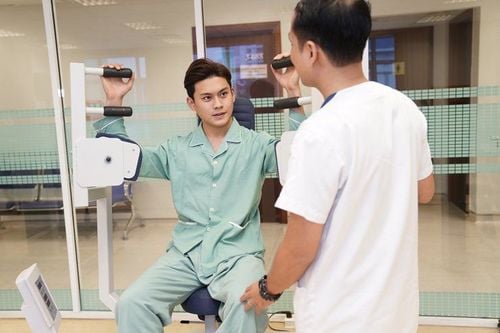
Standing exercises Support the patient to stand up to improve blood circulation, making it easier to eliminate waste products such as urine and feces.
1.2. Regaining the ability to perform activities of daily living An independent life is a goal to aim for after an unfortunate person suffers a spinal cord injury. Those with injuries lower than the cervical spinal cord can learn to take better care of themselves.
Skin care If the patient is able to roll over, encourage them to change positions frequently to avoid pressure sores. When you want to roll to the right, instruct the patient to cross the left leg over the right leg, bring the hands to the left, then bring the hands to the right and raise the head tilted to the right to turn the body to the right.
In cases where the patient is unable to roll over on their own, caregivers should assist in repositioning by rolling away from or approaching them. Note that when placing the patient in a supine position, the lower shoulder should be brought forward slightly to avoid ulcers between the shoulder blades.
Use water mattresses or seat cushions to avoid ulcer complications. Caregivers need to help clean the skin, care for and wash the sores daily if complications appear.
Care of the urinary tract Instruct the patient on how to clean the genitals, self-catheter and wear a urine bag. Doing this helps prevent complications from urinary tract infections.
Gastrointestinal care Most patients with spinal cord injury lose the ability to push themselves when defecating. Teach them how to use their hands to remove stool each day.
1.3. Psychological support This is a factor that must not be overlooked when treating people with spinal cord injuries. An injury that causes the person to lose the ability to function suddenly is a great psychological trauma, leaving the patient vulnerable to extreme anxiety, frustration, sadness, and easily depressed and irritable. This psychological reflex is very understandable, but if not addressed, it will negatively affect the treatment. The patient's family and medical staff need to understand and support by:
Show sympathy and be ready to help the patient. Regularly encourage them, provide opportunities for them to play, work, relieve stress. Encourage the patient to take care of themselves and provide support when needed. Do not leave the patient alone. Explain the disability slowly, without hiding or lying to the patient that it can be completely cured. Encourage the patient to meet many other people who have also suffered spinal cord injuries to live, talk, and help the spirit to be happier and more optimistic.

Practice sitting For the case of not being able to sit, need help at first. Keeping the patient in a sitting position, ask them to straighten or extend their arms forward, gently pushing their shoulders forward, back, to the right, and to the left, respectively. Legs apart, placed straight on the floor. Practicing this movement helps to maintain balance in a sitting position, later the patient can sit on his own.
Standing exercises Support the patient to stand up to improve blood circulation, making it easier to eliminate waste products such as urine and feces.
1.2. Regaining the ability to perform activities of daily living An independent life is a goal to aim for after an unfortunate person suffers a spinal cord injury. Those with injuries lower than the cervical spinal cord can learn to take better care of themselves.
Skin care If the patient is able to roll over, encourage them to change positions frequently to avoid pressure sores. When you want to roll to the right, instruct the patient to cross the left leg over the right leg, bring the hands to the left, then bring the hands to the right and raise the head tilted to the right to turn the body to the right.
In cases where the patient is unable to roll over on their own, caregivers should assist in repositioning by rolling away from or approaching them. Note that when placing the patient in a supine position, the lower shoulder should be brought forward slightly to avoid ulcers between the shoulder blades.
Use water mattresses or seat cushions to avoid ulcer complications. Caregivers need to help clean the skin, care for and wash the sores daily if complications appear.
Care of the urinary tract Instruct the patient on how to clean the genitals, self-catheter and wear a urine bag. Doing this helps prevent complications from urinary tract infections.
Gastrointestinal care Most patients with spinal cord injury lose the ability to push themselves when defecating. Teach them how to use their hands to remove stool each day.
1.3. Psychological support This is a factor that must not be overlooked when treating people with spinal cord injuries. An injury that causes the person to lose the ability to function suddenly is a great psychological trauma, leaving the patient vulnerable to extreme anxiety, frustration, sadness, and easily depressed and irritable. This psychological reflex is very understandable, but if not addressed, it will negatively affect the treatment. The patient's family and medical staff need to understand and support by:
Show sympathy and be ready to help the patient. Regularly encourage them, provide opportunities for them to play, work, relieve stress. Encourage the patient to take care of themselves and provide support when needed. Do not leave the patient alone. Explain the disability slowly, without hiding or lying to the patient that it can be completely cured. Encourage the patient to meet many other people who have also suffered spinal cord injuries to live, talk, and help the spirit to be happier and more optimistic. 1.4. Changing the living environment The surrounding living environment should be adjusted and changed to be suitable for the patient's living and movement. Some suggestions are as follows:
Widen the doors, bathroom doors to make wheelchair accessible. There should be no steps or obstacles in the patient's passageways. Handrails should be designed around the toilet area. The kitchen area should be of an appropriate height, fully equipped so that the patient can still perform housework while in a wheelchair.
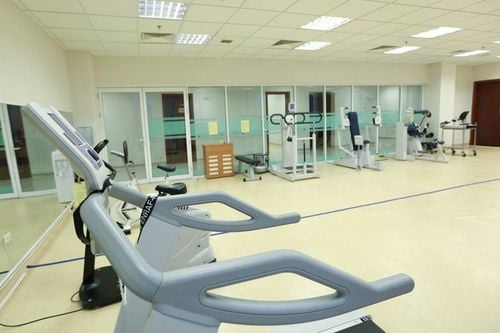
Closed chain of gyms from gross to fine motor for Rehabilitation of movement, living and hand function training. A system of high-class specialized machines, beds, and tools from the Netherlands, Italy, Japan, etc. integrates the application of advanced informatics technology to help optimize the treatment and rehabilitation process for patients. Intensive rehabilitation treatment rooms: Rehabilitation after surgery; Pediatric respiratory physiotherapy; Shock wave treatment; Treatment with magnetic fields... High-class machines, training beds, and specialized tools from the Netherlands, Italy, Japan... integrates the application of advanced informatics technology to help optimize the treatment process. , rehabilitation for patients Rehabilitation gym provides the following services:
Rehabilitation after orthopedic surgery: Joint replacement; bone fusion; ligament regeneration ... Rehabilitation of central and peripheral nervous diseases Rehabilitation for cancer patients Rehabilitation of spinal diseases such as: back pain, neck pain, neck pain, degeneration spondylolisthesis, herniated disc...
Please dial HOTLINE for more information or register for an appointment HERE. Download MyVinmec app to make appointments faster and to manage your bookings easily.





